Are you a cat lover who’s ever wondered why some cats are so big?
It’s not uncommon to come across hefty, fluffy, and stocky felines that make you wonder what’s behind their size. While genetics play a major role in determining a cat’s size, there are other factors at play too, such as breed, diet, and lifestyle.
For instance, the Maine Coon is naturally larger than most cats and can weigh up to 25 pounds. However, overeating, lack of exercise, and underlying medical conditions can also contribute to a cat packing on extra pounds.
Interestingly enough, male cats tend to be larger than females due to their hormonal makeup. If your cat is an indoor pet, they’re more prone to obesity because they don’t have the chance to burn off calories like their outdoor counterparts.

Managing your cat’s weight is crucial for their overall health and longevity. As a responsible pet owner, it’s important to understand why your cat may be bigger than expected and learn how to help them maintain a healthy weight.
In this blog post, we’ll delve into the reasons behind your cat’s size variation and provide tips on how to determine if your furry friend is overweight. We’ll also offer advice on how you can help them shed those extra pounds in a safe and healthy way.
So, let’s dive in now.
What Causes Cats to be Big?
The answer to this question is complex, as there are several factors that contribute to a cat’s size.
From genetics to nutrition to lifestyle, let’s explore what makes our feline friends big. Genetics is the foundation of a cat’s size.
Certain breeds of cats, like Maine Coons and Ragdolls, are naturally larger than others due to their larger bone structure and muscle mass. However, even within a breed, there can be significant variations in size and weight due to the traits inherited from their ancestors.
Another key factor in determining a cat’s size is nutrition. Overfeeding your cat with high-calorie, low-nutrient foods may lead to weight gain and obesity, which can cause health issues such as diabetes, arthritis, and heart disease.
Conversely, malnutrition can stunt growth and weaken the immune system. Therefore, providing a well-balanced diet is crucial for maintaining a healthy weight in your feline friend.
Age and gender also play a role in a cat’s size. Kittens grow rapidly during their first year of life and may gain several pounds per month.
Once they reach maturity, their growth rate slows down and they may start to fill out or lose weight depending on their lifestyle and health. Males tend to be larger than females of the same breed and age due to higher levels of testosterone that promote muscle development and bone growth.
Lastly, a sedentary lifestyle can make a cat big. Cats are natural hunters and require regular exercise to maintain their physical and mental health.
If a cat spends most of its time sleeping or lounging around without any physical activity, it can easily become overweight or obese. This is especially true for indoor cats who do not have access to outdoor spaces where they can climb, run, and play.
Overfeeding
We all want our cats to be happy and well-fed, but too much of a good thing can lead to negative consequences.
Overfeeding is one of the primary reasons why cats become overweight or obese. Just like humans, if cats consume more calories than they burn off, they’ll gain weight.
This can happen when cats are given too much food or treats, or fed a diet high in fat and carbohydrates. It’s important to remember that cats have unique nutritional needs that differ from humans and even dogs.
Consistently overfeeding your cat can lead to serious health problems like diabetes, heart disease, and joint issues. Leaving food out all day for your cat to graze on is a common mistake that many cat owners make.
However, this can lead to overeating and weight gain since cats have a natural instinct to eat whenever food is available. Instead, it’s best to feed your cat smaller meals throughout the day or stick to a feeding schedule with measured portions.
Using food as a reward or treat is another factor that can contribute to overfeeding. While an occasional treat is okay, it’s essential not to make it a regular habit.
Treats should be given in moderation and not make up a significant portion of your cat’s daily calorie intake. Lastly, the type of food you feed your cat plays a crucial role in their weight management.
Foods that are high in carbohydrates and fillers can cause weight gain more easily than foods that are high in protein and low in carbs. It’s essential to choose high-quality cat food that meets your cat’s nutritional needs and avoid foods marketed as “diet” or low-fat as they’re often filled with fillers and may not be the best choice for your cat’s health.
Sedentary Lifestyle
One of the major culprits that lead to obesity in cats is a sedentary lifestyle.
Although cats are naturally active animals, their indoor lifestyle may cause them to spend most of their time napping and lounging around the house, which can quickly lead to weight gain and health problems. Just like humans, cats need regular exercise to maintain a healthy weight.
Lack of exercise can cause them to become overweight or obese, resulting in diabetes, heart disease, and joint issues. Unfortunately, many cat owners are not aware of the importance of physical activity and allow their cats to live an inactive lifestyle.
To prevent your cat from becoming overweight or obese due to a sedentary lifestyle, it’s crucial to provide them with opportunities for physical activity. You can offer them interactive toys, climbing structures, or even take them for walks outside (if they are comfortable with it).
By engaging your cat in playtime regularly, you can help them burn off excess calories and maintain a healthy weight. In addition to providing opportunities for exercise, monitoring your cat’s diet is also vital.
Overfeeding can cause weight gain, so it’s essential to feed your cat a balanced diet in appropriate portions. Avoid treats or diets that are high in fat and carbohydrates and choose high-quality cat food that meets their nutritional needs.
The Dangers of Obesity in Cats
Obesity is a common issue among cats, and it can pose serious health risks if left unaddressed.
Here’s what you need to know about the dangers of obesity in cats. One of the most significant dangers of obesity in cats is the increased risk of diabetes.
When a cat is carrying excess weight, the fat tissue affects insulin secretion, leading to insulin resistance. This means that the body can’t properly regulate blood sugar levels, which can lead to diabetes – a lifelong disease that requires careful management.
Another danger of obesity in cats is the strain it puts on their heart. Extra weight puts a lot of pressure on the heart, leading to various cardiovascular diseases such as hypertension and heart failure.
Additionally, obese cats may struggle with respiratory problems that make it difficult for them to breathe. Joint problems are also common among overweight cats.
The extra weight puts a lot of pressure on their joints, which can lead to arthritis and other joint-related issues. For older cats who may already have joint problems, this can be especially challenging.
Liver diseases such as hepatic lipidosis are prevalent in obese cats. The accumulation of fat in the liver can cause liver damage and even lead to liver failure – a condition that requires prompt veterinary attention.
Finally, obese cats are at an increased risk of developing cancer. The excess fat tissue produces hormones that increase the risk of cancer development, such as mammary gland tumors and lymphoma.
This means that maintaining a healthy weight isn’t just about managing your cat’s risk of diabetes or heart disease – it’s also about helping them avoid serious illnesses like cancer. In conclusion, obesity in cats can have severe health consequences if left untreated.
By monitoring your cat’s weight and taking steps to prevent obesity, you can help them avoid the dangers associated with this condition.
Tips for Managing Your Cat’s Weight
You want your feline friend to be healthy and happy. One way to achieve this is by managing their weight. Obesity in cats can lead to various health problems such as diabetes, arthritis, and heart disease. Here are five tips for keeping your cat fit and fabulous:
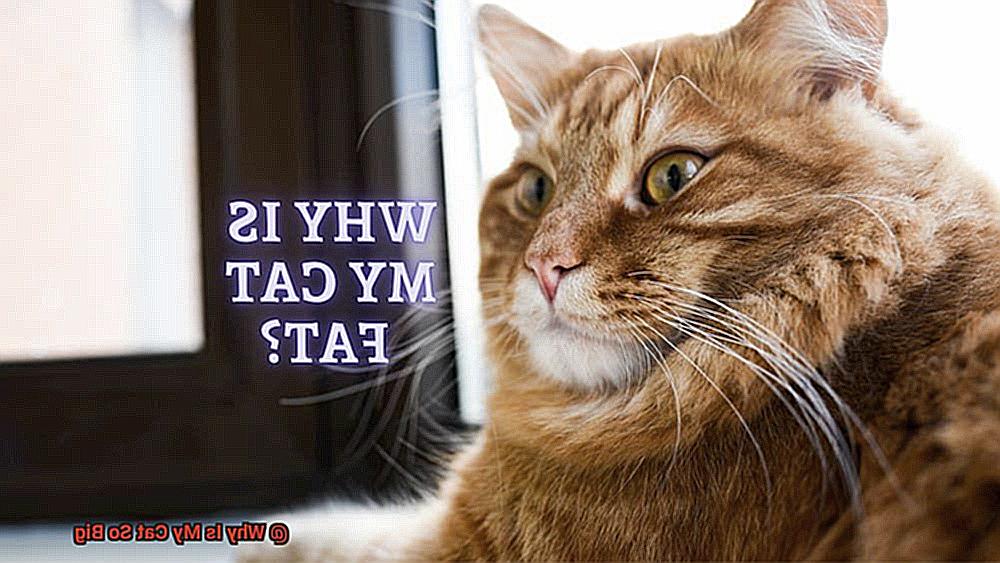
Consult with Your Veterinarian
Your veterinarian can determine if your cat is overweight and provide guidance on how to manage their weight. They may suggest a specific diet or exercise plan that suits your cat’s needs.
Measure Their Food
Measuring your cat’s food is essential to control the amount they eat and prevent overeating. Use measuring cups to ensure that you’re feeding them the right amount at each mealtime.
Choose a High-Protein, Low-Carbohydrate Diet
Cats are obligate carnivores and require a high-protein diet to maintain good health. Choose foods that are rich in protein and low in carbohydrates to support muscle growth and keep them feeling full.
Encourage Exercise
Exercise is crucial for maintaining a healthy weight in cats. Encourage playtime with toys or invest in a cat tree that promotes climbing and jumping. Set aside time for interactive play with your cat to keep them engaged.
Monitor Their Weight Regularly
Keeping tabs on your cat’s weight can help you catch any changes early on and make adjustments to their diet or exercise routine as needed.
Provide Well-Balanced Diet
A balanced diet for cats includes protein, carbohydrates, fats, vitamins, and minerals to promote their overall health and maintain their weight.
Protein is the most vital nutrient for cats as they are obligate carnivores. This means they require a high amount of animal-based protein to build and maintain strong muscles.
Just like a skilled hunter, your cat needs enough protein in their diet to stay agile and active. Carbohydrates provide energy for cats but should be fed in moderation to prevent weight gain.
Too many carbs can be like a sugar rush – it gives you a quick boost of energy but ultimately leads to health issues down the road. Fats are also essential for your cat’s health, providing energy and helping absorb certain vitamins.
Good sources of fat include chicken fat, fish oil, and flaxseed. Think of it as giving your cat the fuel they need to run smoothly.
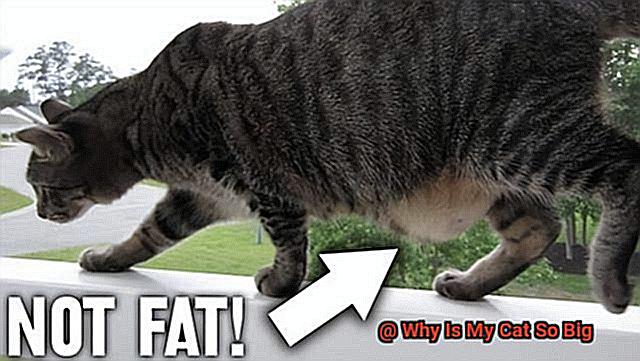
Vitamins and minerals are crucial for a cat’s overall wellbeing. While fruits and vegetables can provide some nutrients, cats don’t require as many vegetables as humans do.
Think of it like taking a daily supplement – it helps fill any gaps in their diet. In conclusion, feeding your cat a well-balanced diet is crucial for their happiness and health.
Consult with your veterinarian to determine the appropriate type and amount of food for your cat based on their age, weight, and activity level.
Regular Exercise and Mental Stimulation
And just like us humans, regular exercise and mental stimulation are crucial factors in maintaining a healthy weight for cats.
So how can you provide your feline friend with the exercise and mental stimulation they need to thrive? Playtime is an excellent way to provide your cat with exercise.
Cats are natural hunters, and they love to chase and pounce on toys like balls, strings, and feathers. So, carve out at least 15-20 minutes a day for playtime with your cat.
Not only will it help them burn calories and improve their physical health, but it’s also a great opportunity for bonding. Interactive feeders are another fantastic way to promote exercise and mental stimulation for your cat.

These feeders require your cat to work a little harder for their food, making mealtime more engaging and challenging. Not only does this slow down the rate at which your cat eats, but it also reduces the risk of overeating.
But exercise alone isn’t enough. Mental stimulation is equally important for your furry friend’s well-being.
Providing interactive toys such as puzzle feeders or scratching posts can keep your cat mentally engaged and stimulated. This is especially crucial for indoor cats who may not have access to outdoor activities.
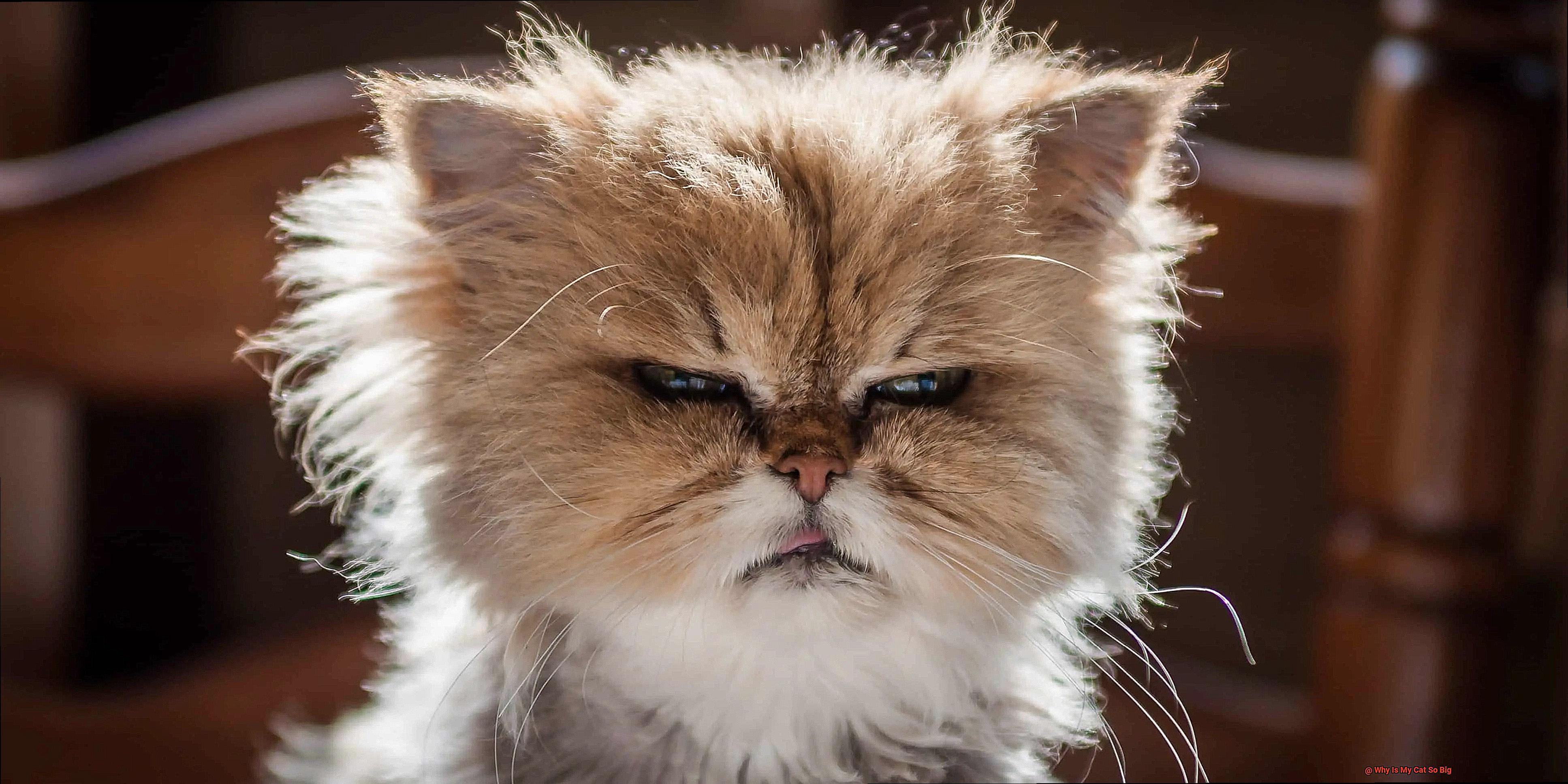
So, regular exercise and mental stimulation are critical components of maintaining a healthy weight for cats.
How to Tell if Your Cat is Obese or Overweight

One way we can do this is by making sure that they maintain a healthy weight. Obesity in cats can lead to several health problems such as diabetes, heart disease, and joint issues.
Here, we’ll explore five ways to tell if your cat is overweight or obese.
Feeling for Your Cat’s Ribs
Feeling your cat’s ribs is an excellent way to determine if they’re carrying excess weight. When you gently run your hands along your cat’s sides, you should be able to feel their ribs without having to press too hard.
If you can’t feel them at all, then your cat may be overweight.
If you’re having trouble feeling your cat’s ribs, you can try running your hands over their sides while they’re standing up or lying down.
You can also consult with your veterinarian to get a better idea of what a healthy weight should feel like for your cat.
Look at Your Cat’s Waistline
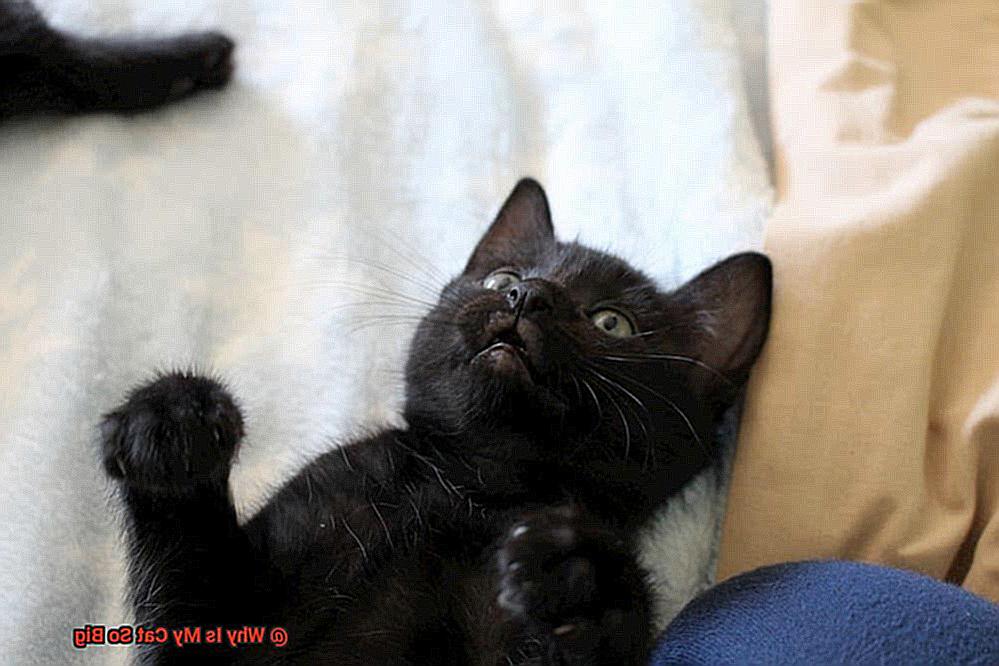
Another way to determine if your cat is overweight is by looking at their waistline. A healthy cat should have an hourglass figure with a visible narrowing at the waist when viewed from above.
If your cat appears to have a straight or even bulging line along their sides, then they may be carrying excess weight.
It’s important to note that some cats are naturally larger than others and may not have a noticeable waistline.
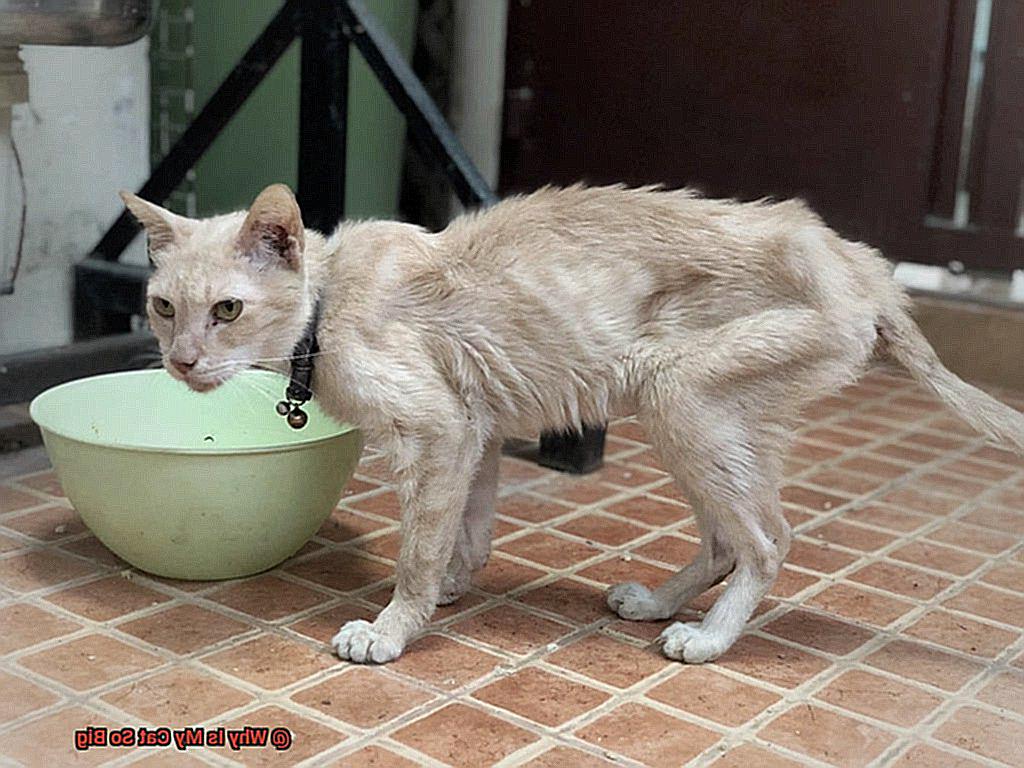
However, if you’ve noticed that your cat has gained weight over time and no longer has a waistline, it may be time to consult with your veterinarian.
Check for Fat Deposits
Fat deposits can be another sign that your cat is overweight or obese. These deposits may appear as rolls or bulges around the neck, abdomen, and back legs. You can run your hands over these areas to see if there are any noticeable lumps or bumps.
It’s important to remember that not all fat deposits are dangerous – some cats may naturally carry more fat in certain areas of their body. However, if you’ve noticed a significant increase in fat deposits on your cat’s body, it may be time to consult with your veterinarian.
Examine Your Cat’s Belly
Your cat’s belly can also give you clues about their weight. A healthy cat should have a firm belly that doesn’t sag or hang down. If your cat’s belly appears saggy or hangs down low, then they may be carrying excess weight.
If you’re unsure about your cat’s belly, try gently lifting them up and examining the area. You can also consult with your veterinarian to get a better idea of what a healthy belly should look like.
Consult with Your Veterinarian
Lastly, it’s important to consult with your veterinarian if you suspect that your cat may be overweight or obese.
Treating Obesity in Cats
Just like humans, obesity in cats can lead to various health problems such as heart disease, joint pain, and diabetes. Therefore, it’s essential to take steps to ensure our feline friends maintain a healthy weight.
The initial step in treating obesity in cats is by changing their diet. A healthy diet should consist of high-quality protein, moderate fat, and low carbohydrates.
It’s also crucial to monitor their food intake to prevent overeating. Remember, portion control is key!
Exercise is just as essential in treating obesity in cats.
Encouraging your kitty to engage in physical activity can help burn off excess calories and improve their overall health. You don’t need any fancy equipment; simple activities such as playing with toys or chasing a laser pointer can be effective.
In some cases, medication may be necessary to treat obesity in cats. However, remember that this should only be done under the supervision of a veterinarian.
Treating obesity in cats requires patience and consistency. It may take several months or even a year for your furry friend to reach a healthy body condition.
Consistency in feeding and exercise routines is key to achieving success in treating obesity in cats.
Conclusion
In conclusion, there are several reasons why your cat may be bigger than average.
It could be due to genetics, overfeeding, lack of exercise, or an underlying medical condition. If you’re concerned about your cat’s weight, it’s always best to consult with your veterinarian for advice on a healthy diet and exercise plan.
Remember to provide plenty of playtime and mental stimulation for your furry friend.







